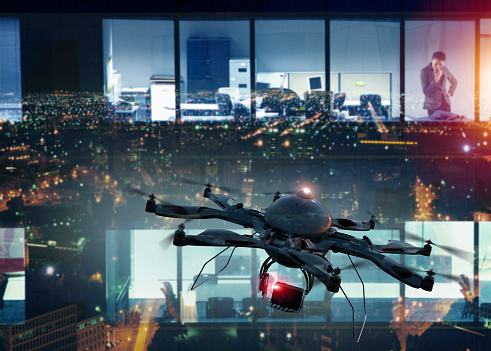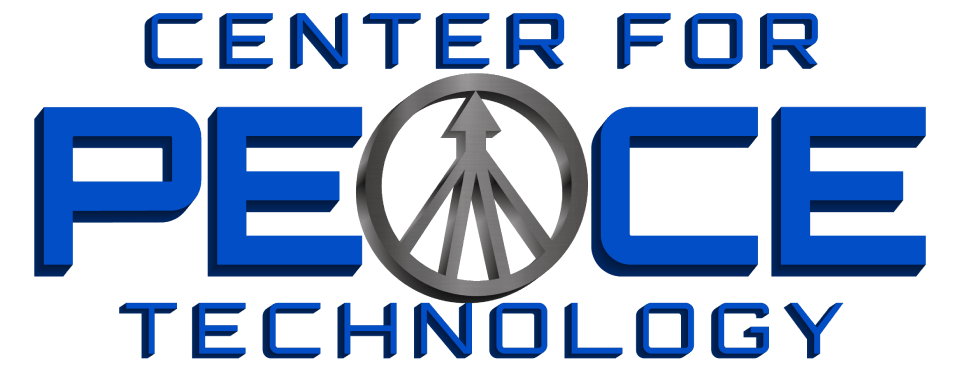
Internal Peace
As with all mission elements, striving for internal peace is critical to mission success. CPT is dedicated to developing technologies that will enhance quality of life, affording all individuals the opportunity to achieve self-actualization and transcendence, the hallmarks of optimal internal peace, as prescribed in “Maslow’s Hierarchy of Needs”. Only upon pursuing this level of internal peace for all, will the insatiable appetite of greed and hatred be
diminished, thereby allowing proximal, societal, and environmental peace to prevail.
Challenges:
- Inadequate Work-Life Balance as a social norm – Regardless of the cause, having an imbalance in time and energy expended between one’s work and other aspects of their life prohibits the pursuit of internal peace.
- Elevated prevalence of Antisocial Personality Disorder (ASPD)/Psychopathy in adults and Conduct disorder in children. 1,2
- Elevated prevalence of Narcissistic Personality Disorder (NPD). 1
- Epidemic levels of maladaptive behaviors, such as substance abuse, aggression, self-harming, suicidal ideation, and bullying – these behaviors can be attributed to coping skills individuals have developed to deal with mental and physical ailments, and poor living conditions.


Technological Solutions:
- Autonomous Systems – autonomous systems can perform tedious, time-consuming tasks allowing time and energy to be redirected to internal development.
- Artificial Intelligence (AI) – AI can advanced technologies that promote and create a healthy state of mind and body, such as chatbot therapeutic diagnostics, nutritionists, and physical well being coaches
- Smart Phone Apps – Apps are readily accessible technology that can be deployed to facilitate identifying, diagnosing, and treating individuals with mental and physical ailments by, for example, helping to track and monitor health parameters such as substance consumption, sleep patterns, and stress levels.
- Virtual/Augmented Reality and Telepsychiatry: These enhanced communication/interaction technologies can enable a virtual presence to help reach more individuals needing services and enable professional service providers to increase efficacy of their therapeutic treatment modalities.
References
1- B. Eddy “Are Narcissists and Sociopaths Increasing?,” Psychology Today, (Apr. 30, 2018) website:
https://www.psychologytoday.com/us/blog/5-types-people-who-can-ruin-your-life/are-narcissists-and-sociopaths-increasing
2- K. Kiehl and M. Hoffman “The Criminal Psychopath: History, Neuroscience Treatment, and Economics.”
Jurimetrics, 51 : 355-397 (2011)
Proximal Peace
At a time that interpersonal relationships are strained due to polarizing politics and opposing religious constructs, or substance abuse and other mal-adaptive behaviors, the importance of proximal peace to mission success is clear and evident. CPT is dedicated to developing technologies that facilitate peaceful conflict resolution and aid individuals in connecting constructively with those around them.

Challenges:
- Individuals in living situations where they frequently see or experience others exhibiting mal-adaptive behaviors, e.g. substance abuse, sexual abuse, domestic violence, gang and other criminal related activities.
- Inadequate Work-Life Balance as a social norm – Regardless of the cause, having an imbalance in time and energy expended between one’s work and spending time connecting with others around them prohibits the pursuit of proximal peace.
- Diminished skill sets for engaging in constructive conflict resolution and tactful arguments/debates. Too often we resort to condescending, aggressive, and offensive rhetoric while arguing.
Technological Solutions:
- Virtual/Augmented Reality & Enhanced Telepresence: These enhanced communication/interaction technologies can enable a virtual presence to help counselor/mediator professionals optimize efficacy of their techniques and methods for aiding in the diplomatic and conflict resolution process.
- Advanced Defensive Technologies: defensive technologies, such as advanced non-lethal/less-than-lethal directed energy systems, smart barricades, etc. offer protection from individuals engaging in maladaptive behaviors
- Autonomous Systems: Similar to there use in facilitating internal peace, autonomous systems can perform tedious, time-consuming tasks allowing time and energy to be redirected to connecting with others and building interpersonal relationships.

- Smart Phone Apps & AI: Technologies that promote and facilitate healthier families and local communities. For example, smart phone apps that aid in various aspects of daily living, such as tracking and monitoring behavior patterns, can aid in more effective communication, and time management to improve work-life balance.
Societal Peace
Another critical mission element, Societal Peace, is perhaps the most complicated mission space as it entails the integration of cultures and value systems across our ever shrinking world, with mild to severe incompatibilities, and the varying degrees of conflict that arise while navigating them. The recent COVID 19 pandemic clearly conveys modern day societal inter-connectivity within, and across all societies across the globe. We must unanimously adopt and accept the paradigm that we are all connected and unite to achieve mission success. A broad range of technologies can be developed and implemented to support this mission space.
Challenges:
- Priority Mission Element – Active shooters and lethal violence in schools and other public areas. The polarizing notions of outlawing guns, or issuing guns to all staff members have major societal implications in either direction. It is CPT’s mission to develop and advocate for the technology to facilitate a middle-of-the-road solution and overcome hurdles imposed by the politically-driven, false dichotomy from this tragic situation
- Inadequate access to basic human needs: medical care, clean water and food, and energy
- Regional armed conflicts and wars throughout the world
- Prevalence of Human trafficking – a crime with nearly 30 million victims around the globe. 1


Technological Solutions:
- Advanced Defensive Technologies – Technologies such as integrated autonomous non-lethal/less-than-lethal weapon deployment systems, counter-personnel directed energy non-lethal/less-than-lethal weapon systems, and smart barriers can be used to reduce gun deaths and lethal violence in public areas, and serve as advanced active shooter countermeasures. The use of non-lethal/less than-lethal technologies in these system will mitigate severe injury and/or fatalities associated with misuse and system malfunctions. These systems are intended to deny access and disable active shooters before they can engage their victims. These systems also serve to mitigate conflict escalation to lethal violence, creating more time for the diplomatic process to take place.
- Virtual/Augmented Reality Telepresence – These digital technologies can facilitate improved communication/interactions and data analytics, resulting in increased efficacy of the diplomatic process by aiding in negotiation, mediation, dialogue, nonviolent action, and conflict transformation, as outlined by the US Institute of Peace.
- Autonomous systems & AI – Advanced autonomous and AI technologies, such as drone-based delivery, tracking, and monitoring systems, can facilitate improved data analytics and increased access to medical care, clean water and food, reducing mortality rates associated with starvation, food and water born diseases, and other medical conditions that have readily available treatments.
- Advanced Green Energy Systems: these technologies are crucial to help reduce humankind’s contribution to accelerated climate change and address the ever-growing demand for energy.
- Space-based Resource Utilization Technology – The Earth is a closed system with limited resources and capacity. The utilization of resources in space is our best option for a growing population.
References
1 Department of Homeland Security (DHS) Center for Countering Human Trafficking, “Countering Human Trafficking:
Year in Review – October 2021 to September 2022” DHS Annual Report (January 2023)
Environmental Peace
It is improbable that we could ever achieve any other form of peace without the necessary resources that our Earth provides, rendering Environmental Peace another crucial path to mission success. We are deeply connected with our Earth and all natural entities within it and the universe around us. The continued abuse and negligence of our environment only breeds further chaos and destruction as we fight over diminishing resources and consume polluted food, water, and air.

Challenges:
- Human contribution to Climate Change – although polarizing political views make this a controversial subject, it is undeniable that our climate is changing and the rate at which it is changing is unprecedented.
- Continued pollution of the land, air, and water– Depletion of the Earth’s resources, for example deforestation, and the ensuing conflict over those resources and the implications on the animals and plants in affected regions.
- Orbital Debris – As of 2021 more than 27000 pieces of space debris from decommissioned and broken spacecraft are orbiting the earth with little, to no means of removal threatening our ability to utilize space-based resources.
Technological Solutions:
- Climate Change Adaptation Technologies – Technologies, such as advanced, large-scale oceanic water desalination as well as heat and flood resilient materials of construction and inhabitable structures, can assist humans, animals, and plants adapt to the changing climate.
- Advanced Clean Energy Systems – New clean energy sources are imperative to slowing down humankind’s contribution to climate change. The CPT will establish an Energy Division dedicated to the advancement of clean energy systems.
- Space-based resource utilization technologies – We must acknowledge that the Earth is a closed system with limited resources and capacity. The utilization of resources in space is our best option for a growing population. A Space Division will be established with CPT to spearhead technology development in this mission space.
- Advanced Space-based & Ground-Based Waste Management: Technologies to manage our waste, both on the Earth and in space, with minimal adverse effects to our environment.

